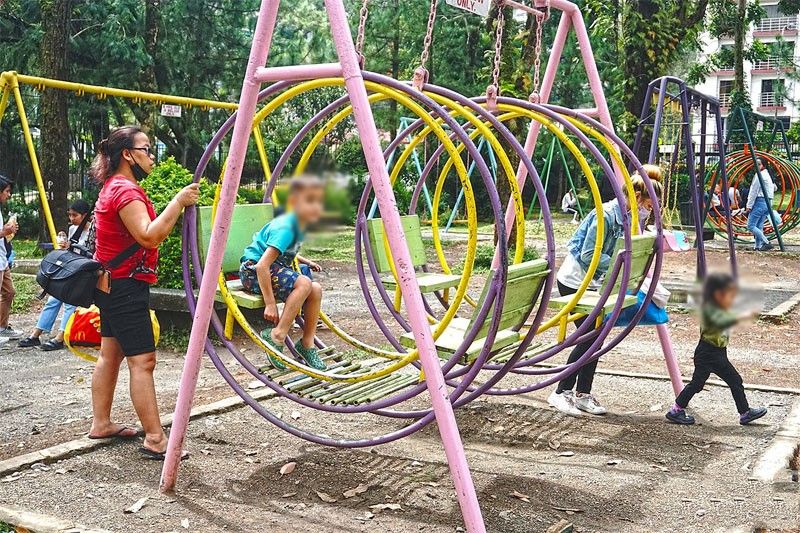DOH: Daily COVID-19 cases could hit 8,000

MANILA, Philippines — Daily COVID-19 cases nationwide could breach 8,000 by the end of October due to declining compliance with minimum public health standards (MPHS), according to the Department of Health (DOH).
DOH Epidemiology Bureau director Dr. Alethea de Guzman further warned the public against a sharp increase in COVID-19 hospital admissions in Metro Manila in early 2023.
“National data cases using actual data as of Sept. 18 showed that cases detected at a national level are expected to follow a continuous slow downward trend with projections estimated cases at 1,204 cases per day by end of October,” De Guzman yesterday said.
“However, further decline in our MPHS compliance may reverse our trend with an increase in cases ranging from 4,055 to as high as 8,670 by end of October,” she added.
Even with the projected increase, De Guzman said severe and critical cases are not seen to exceed those previously observed during the Delta and Omicron spikes.
However, De Guzman said a sharp increase in hospitalization is likely in the National Capital Region (NCR) by early 2023 with the emergence of a new variant.
She also noted that cases in NCR and the rest of Luzon are showing signs of plateauing after an increase, the Visayas maintained a plateau while plus areas remained on an uptrend since early September.
The health official further reported that Mindanao areas recorded a slow but incremental increase in cases in recent weeks.
As of Oct. 9, De Guzman said NCR remains at moderate risk classification while seven regions posted case increase. Among the seven regions that recorded a seven-day growth rate and two-week growth rate are the NCR, BARMM, Calabarzon, Mimaropa, Bicol, Western Visayas, Davao and Soccsksargen.
From Sept. 26 to Oct. 9, the national average daily attack rate (ADAR) is 1.96 per 100,000 population, compared to 2.11 in the previous three to four weeks.
The national risk classification rate remained low while the bed utilization is at 27.44 percent and intensive care unit (ICU) beds at 24.77 percent as of Oct. 8.
On a weekly basis, the DOH recorded a daily average of 2,048 COVID-19 cases or a total of 14,333 cases from Oct. 3 to 9, or 10 percent less than the week before.
Of the new cases, five were severe and critical, 256 succumbed to the disease while 669 were admitted to hospital.
Currently, the DOH said that 614 or 24.3 percent of the COVID beds are occupied.
Based on DOH data, over 73 million individuals or 93.87 percent of the target population have already been vaccinated against SARS-CoV-2 while 20 million have received their booster shots; 6.8 million senior citizens or 78.95 percent of the target A2 population have received their primary series.
F2F-driven spike
De Guzman likewise said an increase in COVID cases is expected when 100 percent face-to-face classes resume in November but the government is putting in place appropriate measures to prevent a surge in COVID admissions and deaths.
“This is what we saw when we lifted restrictions, when we open our sectors there’s a responding increase in cases because there will be exposure and more contact with each other, but what we are trying to avoid are the kids getting admitted in hospitals and becoming mortality,” De Guzman said in English and Filipino during a virtual media forum.
To prevent a rise in hospital admissions and deaths, De Guzman stressed the importance of improving current vaccination and booster uptakes.
She also advised parents and caregivers of children under five who cannot yet receive any COVID vaccine to get vaccinated immediately.
NCR rate dips
From the previous 19.1 percent on Oct. 1, the seven-day COVID-19 positivity rate in NCR decreased to 17.9 percent as of Oct. 8, the OCTA Research group said yesterday.
In a tweet, OCTA fellow Guido David said NCR’s reproduction number also slightly decreased from 1.10 as of Sept. 29 to 0.99 on Oct. 6.
Meanwhile, the one-week average of new COVID-19 cases in NCR went down from 1,057 on Oct. 2 to 863 on Oct. 9 for a one-week growth rate of -18 percent. NCR’s ADAR also decreased to 5.99 per 100,000 population, which David said is considered low.
He noted that health care utilization for COVID-19 in NCR remained low at 36 percent, while ICU occupancy also remained low at 36 percent and 28 percent, both as of Oct. 8.
“We hope that cases in the NCR continue to decrease, but with new subvariants coming in, a wall of immunity that is not solid and the increasing numbers in other parts of the country, we might expect to see more ups and downs in new COVID cases towards the end of the year,” David said.
Lift OHP
Amid mounting complaints from travelers over the inconvenience of the screening system, Sen. Nancy Binay has called for the lifting of the One Health Pass (OHP) and replace it with a simplified process for visitors.
“We should lift the One Health Pass because it is no longer practical and it is becoming more inconvenient for the majority. It’s a bigger hassle for our OFWs and returnees because there is extra screening even though they are quarantine-cleared and they are complete with vaccines and boosters,” Binay said.
Binay noted that Thailand and Vietnam have fully reopened their borders and do not require proof of vaccination or testing, while Singapore requires tourists to be fully vaccinated for at least two weeks.
Besides the risk of data breaches, she added that the OHP has also been the subject of scams, with some websites demanding payment to issue fake passes. – Cecille Suerte Felipe, Pia Lee-Brago
- Latest
- Trending































